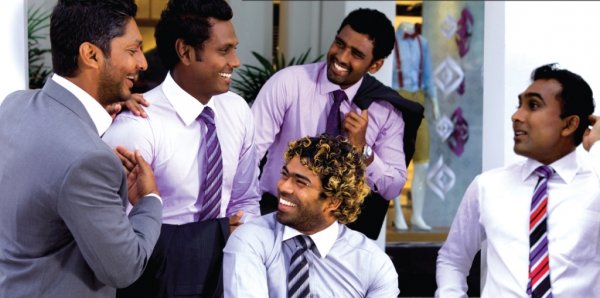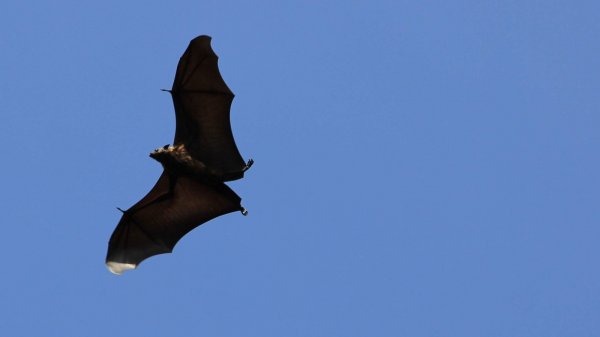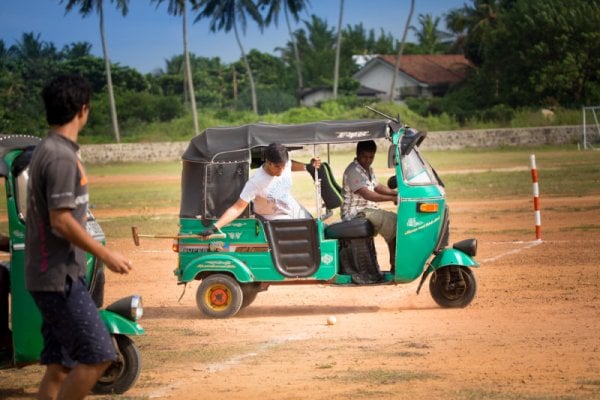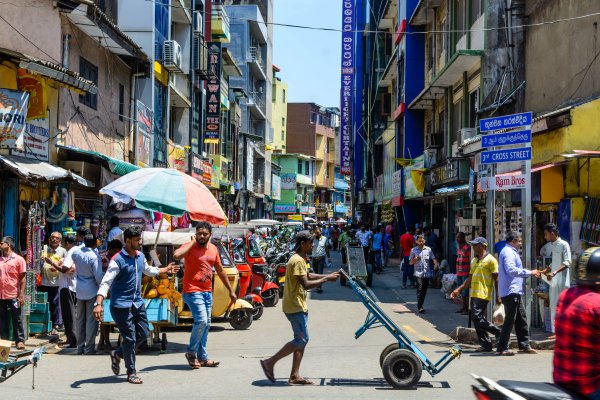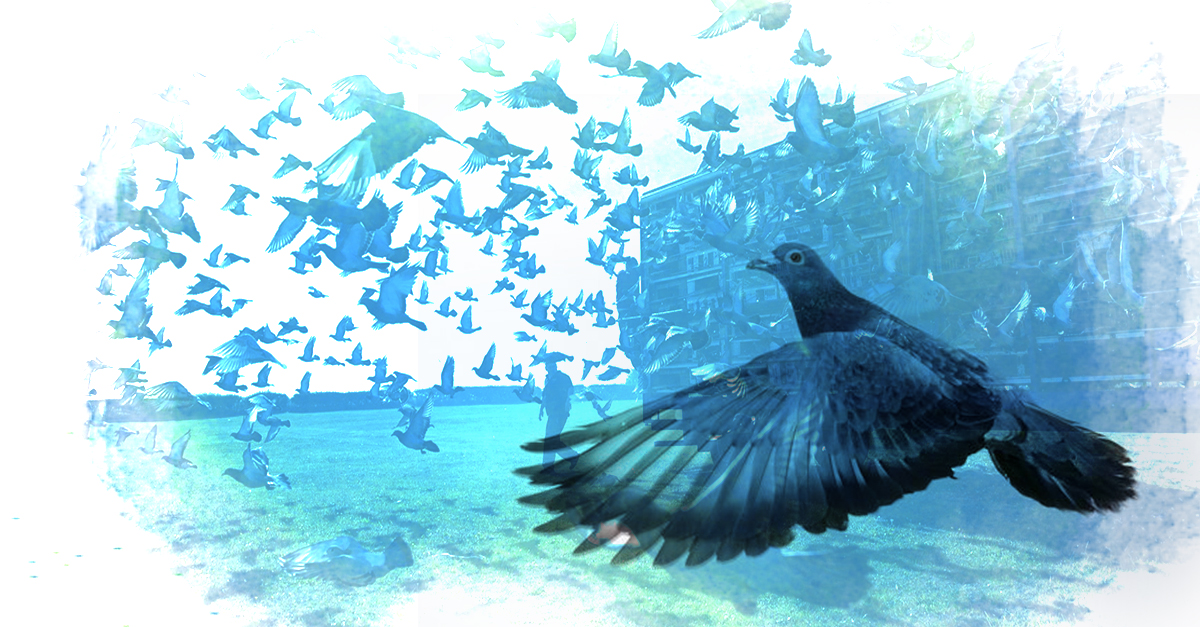
Mohan de Lanerolle (75), ‘Loni’ to his friends and family, belies his age. Now retired, he hunts and fishes during his leisure time, and tends to his massive garden with his wife Monica. For company, he has a Beagle, a Chihuahua and a variety of exotic birds, including a rather jealous blue-and-yellow macaw named Papaya, a parakeet called Luke, and a 44-year-old Amazon parrot. However, one of the more fascinating things he does in his retirement is breeding and training homing pigeons for pigeon racing, a recognised sport in Sri Lanka.
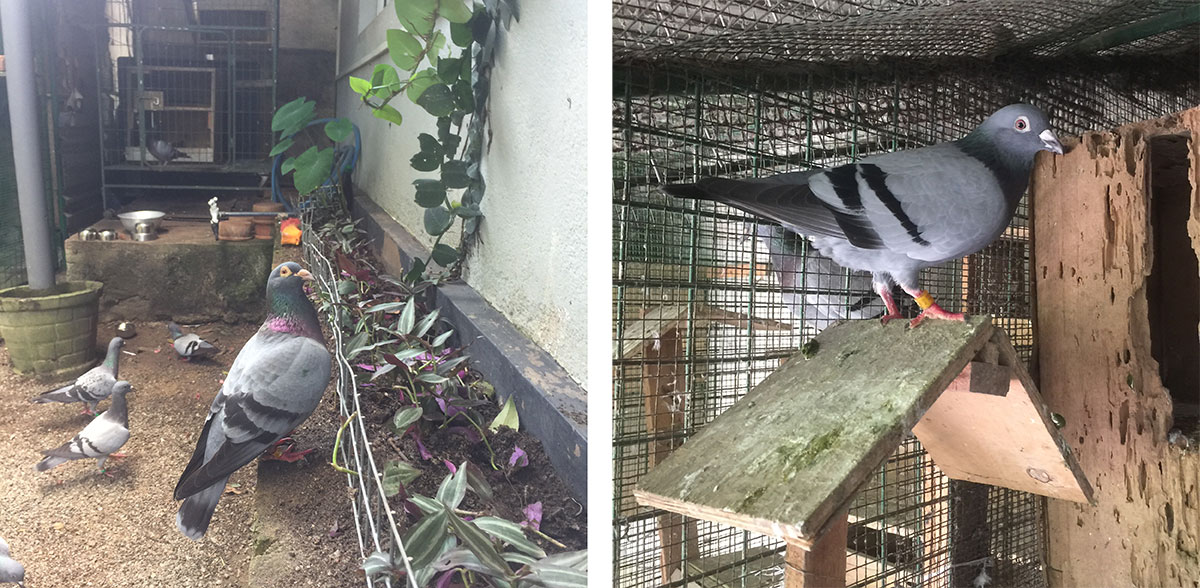
Photo credit: Kris Thomas/ Roar Media
Homing pigeons (Columbia livia) are unique; they have been recognised and prized for their navigational abilities for thousands of years. They have been used as messengers during war, for long distance communication, and as ‘athletes’ in international races. Pigeons are a subject of scientific curiosity, particularly when it comes to their ability to navigate long distances accurately and efficiently. There are many theories surrounding their ability to find their way home, ranging from magnetic resonance detection to their use of infrasound maps. Despite the general mystery that surrounds it, this ability can be honed in pigeons that are specifically bred and trained for this purpose.
Loni’s Pigeons
Enter Loni, who has bred and trained ‘homers’—his nickname for homing pigeons—for over 15 years. His earliest recollection of witnessing the unique abilities of homing pigeons is from when he was a teenager.
“My family had pigeons at our home in Moratuwa,” he said. “My pater (father) and I were rather fond of them. Once, my father had to go to Puttalam for some business and I was to accompany him. Naturally I took the pigeons with me. It was raining heavily when we arrived in Puttalam and my father did not want to release them from their cages. But I remember being adamant, and I released them, knowing they would return.”
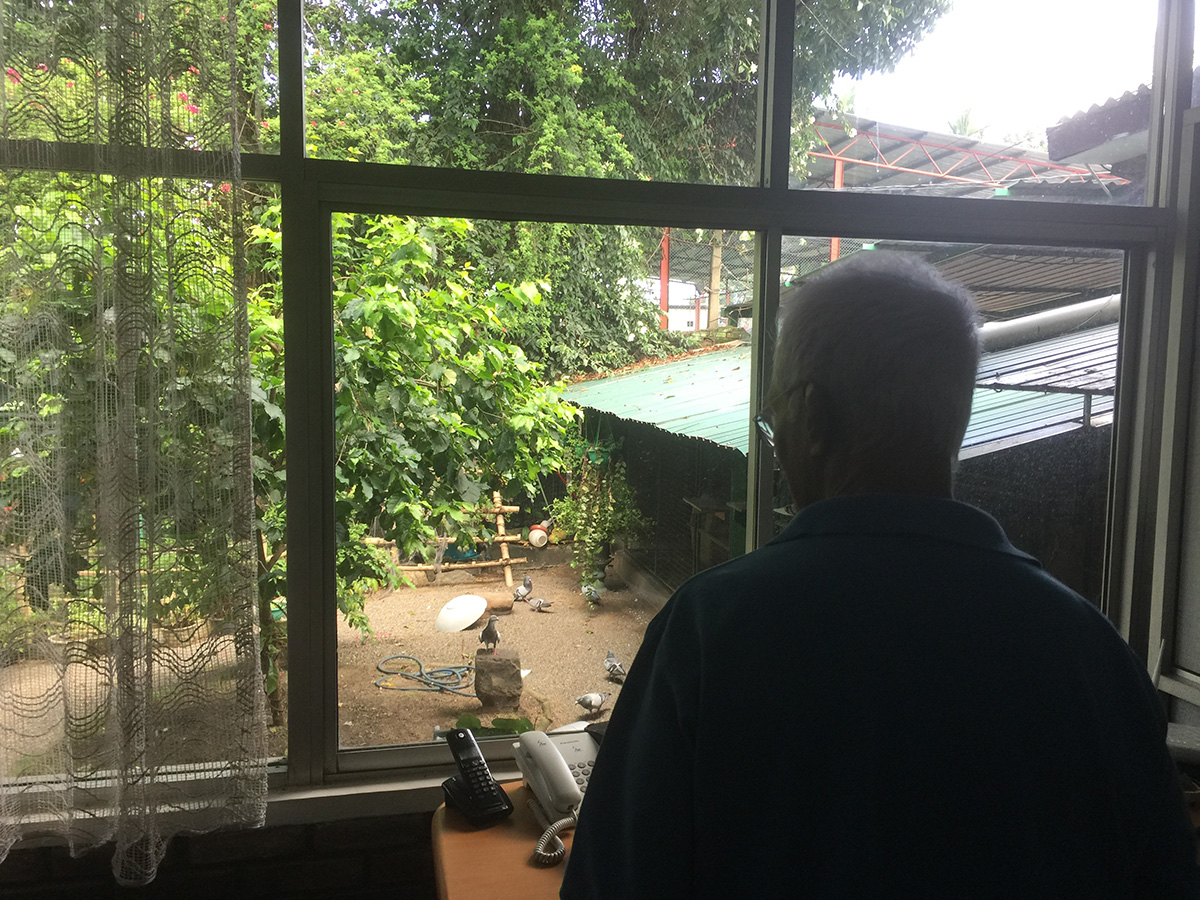
Photo credit: Kris Thomas/ Roar Media
However, as it turned out, they did not return. They saw the released pigeons quickly taking shelter under various roofs and trees to escape from the heavy downpour. Much to the disappointment of his father, they had to return to Moratuwa without the birds. The next day, almost 12 hours later, Loni noticed that the home cages were once again full. The pigeons had found their way home.
“Afterwards, my interest in the hobby and the creatures grew,” said Loni. “I became fond of them. And every bird I bred grew to know and love me. They recognised me whenever I entered the coops. Anywhere I went, I would take them and release them. And they would return home promptly.”
He told us how a pair of pigeons imported from Germany to Sri Lanka escaped quarantine, only to return to Frankfurt several weeks later.
Homing pigeons can fly distances of over 1,000 miles to reach their destinations. The furthest distance a homer has covered is a staggering 7,200 miles (or roughly over 11,000 km) at approximately 50 miles per hour.
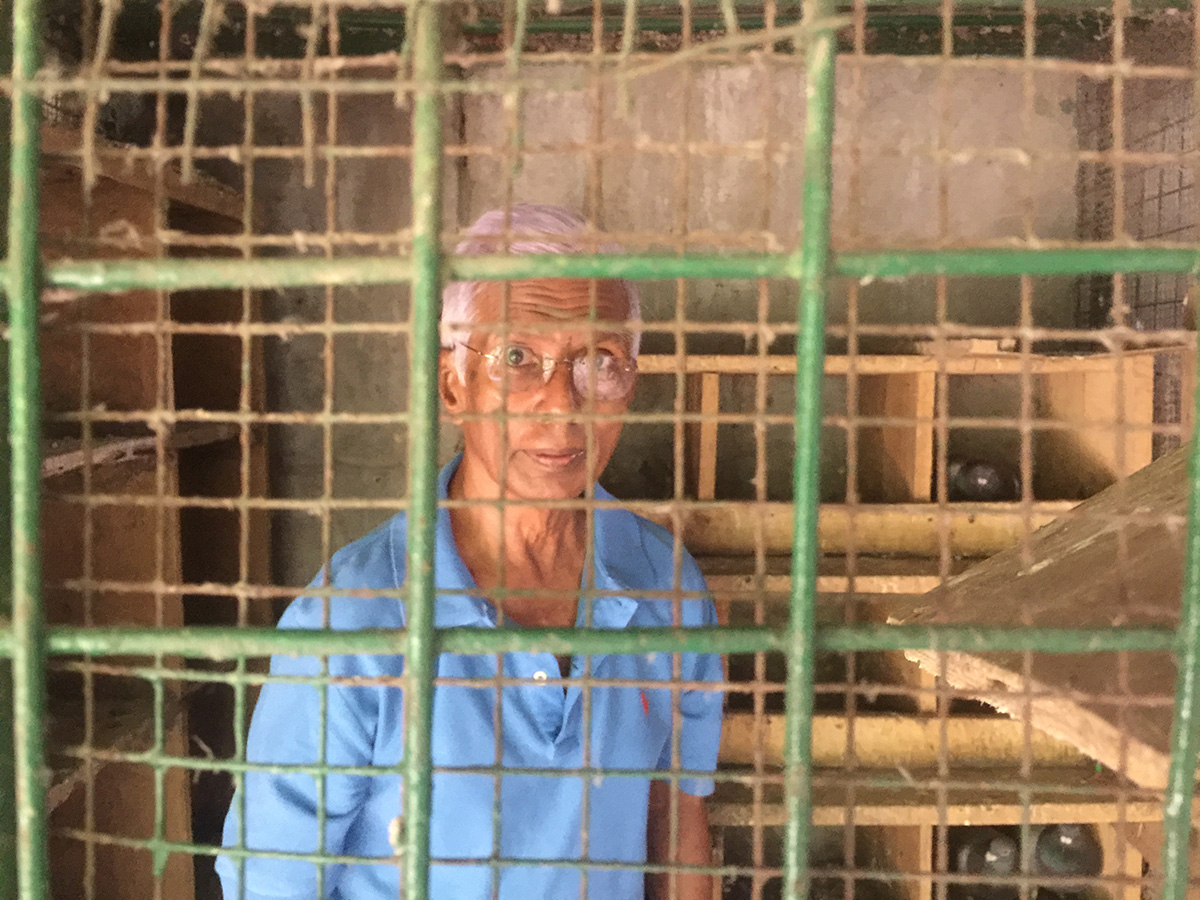
Photo credit: Kris Thomas/ Roar Media
The Secrets of Pigeon Keeping
Loni currently owns around 50 birds, all of which are over 12 years old and bred at his ‘ark’ in Wattala. He tells us that the oldest pair is around 17 years old.
“You have to take them when they are young in order to train them. It’s hard to train adult pigeons. Young birds and hatchlings are kept inside the coop for a month.Once they reach a certain age, they are allowed to go out with the other pigeons,” he explained.
His method has proved effective so far. He has bred over 60 pigeons from a parent stock from Germany, which he says cost him nearly Rs. 50,000 in the year 2000. The pigeons are occasionally released from various locations besides home to test their return time. Loni’s pigeons have set record times during racing events. His pigeons released from Jaffna and Point Pedro have returned home in less than five hours, while the ones released from Puttalam took less than two hours. They completed the journey from Vavuniya in three hours, and from Trincomalee in four. They have also flown home from Kandalama in record time.
The birds need regular exercise to build stamina, which is essential for them to complete long journeys. They are released from their coops once a day, after being fed a diet of various grains and nuts. The birds are released in batches, allowing one group to lead the others over and around Wattala. Once they are airborne, the cages are cleaned and washed to avoid the spread of bacteria and the spread of disease.

Photo credit: Kris Thomas/ Roar Media
“My birds can fly home from anywhere in the country,” said Loni. “But I have lost a lot of birds too. They never came back.”
The biggest threat to the pigeons are falcons. Over the years, Loni has lost a number of birds due to falcon attacks, some even during races. Showing us an injured bird, with a gash under its wing, he said, “Peregrine falcons are a constant threat to homing pigeons. Falcons are regularly found in rural areas, although they are also common in urban areas. They usually nest in telephone towers.”
The Ins And Outs Of Pigeon Racing
Pigeon racing is not new to Sri Lanka. Mostly practised in urban zones, pigeon races are popular in Colombo, Kandy and Vavuniya.
The Sri Lankan Racing Pigeon Federation, the first pigeon racing club in the country to conduct races in an organised manner, was established in 2014. The race locations change regularly, adding variety and challenge to the races.
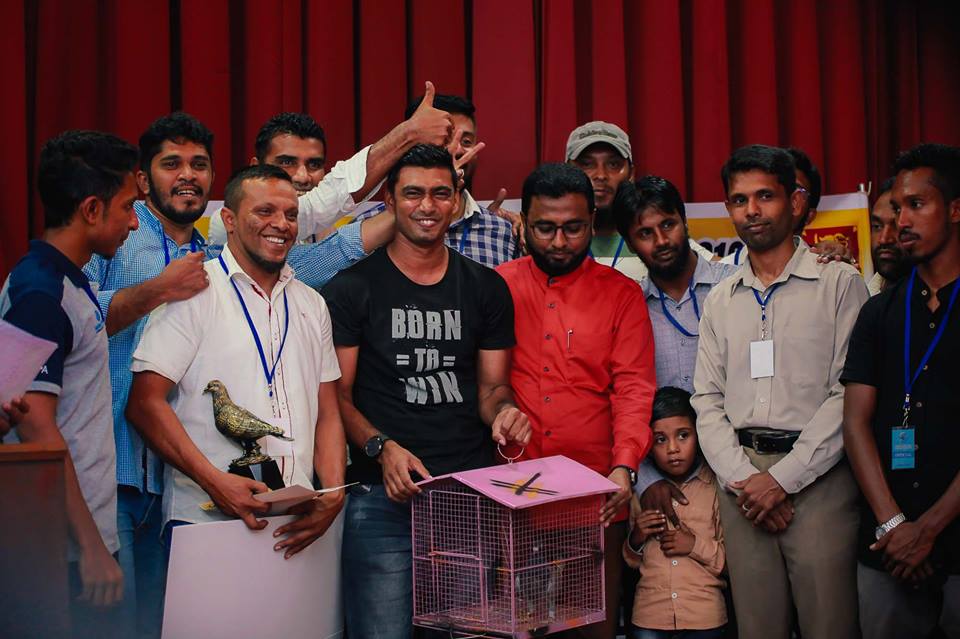
Photo courtesy: The Sri Lanka Racing Pigeon Federation Facebook page.
The annual racing event is organised by the Federation. In every race, breeders and their blindfolded birds are brought to a certain location. The birds are then tagged using a special identification and number. The race starts when the cages are opened, and the birds are expected to fly back to their home lofts. The home cages are monitored; arrivals are documented with videos as evidence and the time of arrival is noted. The arrival time is then reported to the organisers with the identification tag in order to ascertain the winners. The first bird to come home is declared the winner. Following which, the distance from the releasing point to home is calculated as well.
Loni was placed second in the last race that took place in October this year. He lost the first place by a margin of only a few seconds, he said. In an event featuring roughly 800 birds from ten breeders, Loni’s second place is lucky enough. However, he is understandably a little disappointed.
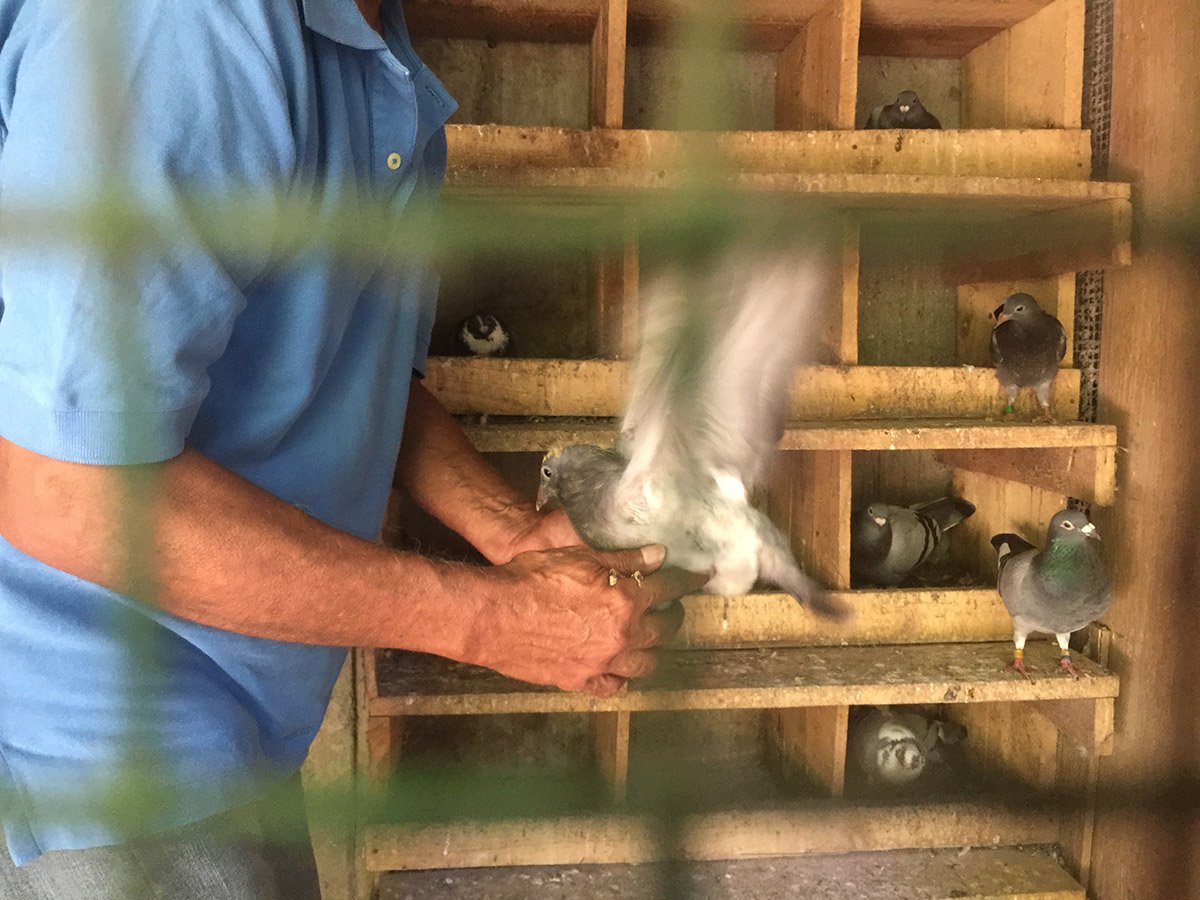
Photo credit: Kris Thomas/ Roar Media
The federation remains dedicated despite the fact that the races have not achieved official status and lack widespread recognition. After every race, prize money and awards are given to all the winners and participants. Even though the federation continues to expand every year, funding that is obtained through donations and the auctioning of birds, is hard to come by. M. H. M. Ajmeer, the president of the Federation, claims that this lack of official recognition is the biggest threat to the sport.
“When the races started there were only 28 members with around 20-40 birds,” he said. “At present, we have grown to 350 members from all over the country. During the last racing event, we didn’t have enough cages to transport the birds. So we had to organise the event during the span of a weekend. We released 650 pigeons from Vavuniya and 160 pigeons from Kandy. Yet we have no proper recognition from the authorities.”
Although the sport has its critics, particularly within law enforcement, Ajmeer says their practice of it is perfectly lawful. “Law enforcement harass us almost all the time,” he said. “They have accused us of trafficking drugs and narcotics using our pigeons. [But] we are trained, disciplined and dedicated to this sport. We do not have to resort to crime.”



